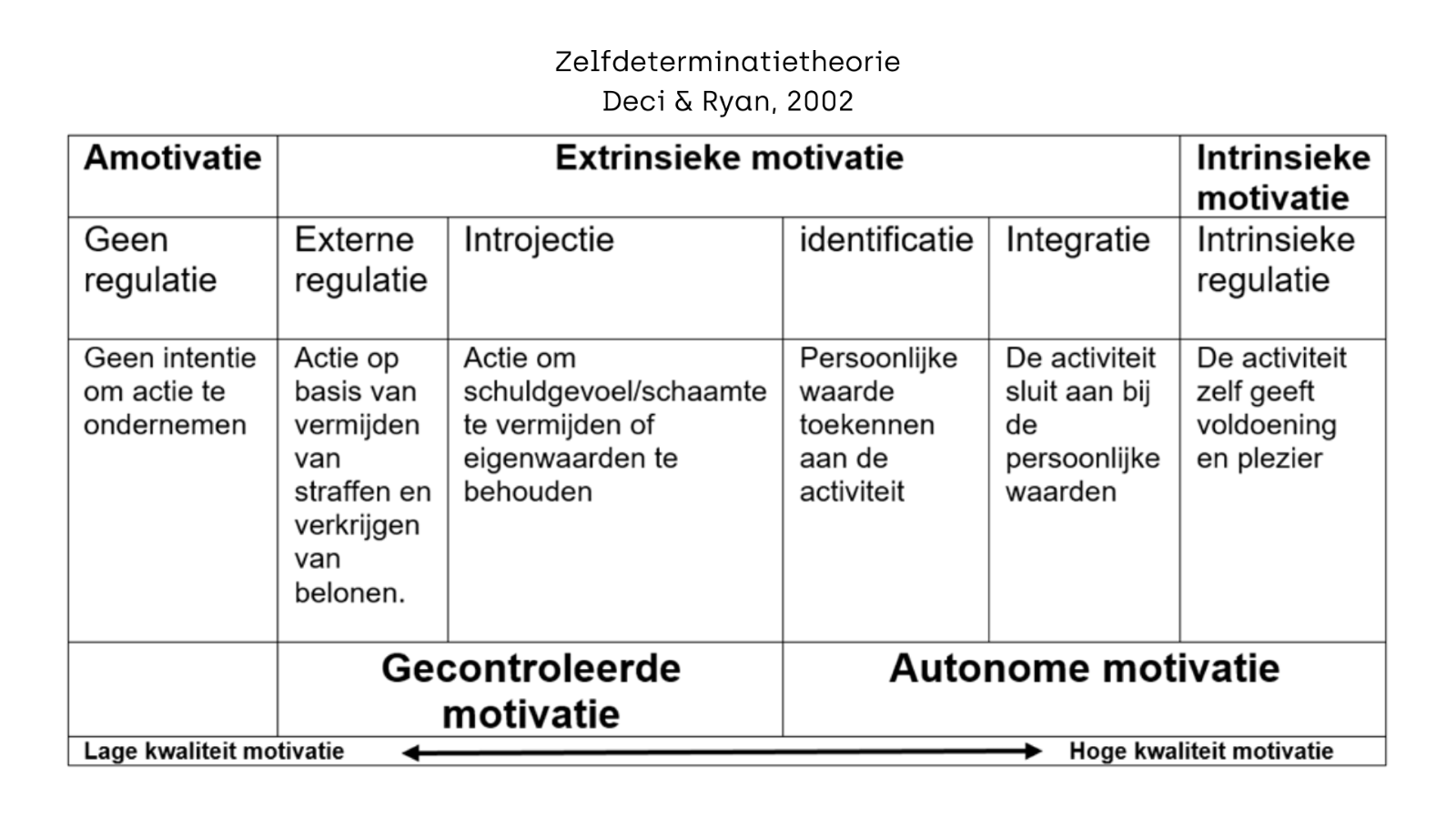
Self-Determination Theory (SDT) is a scientifically based motivation theory that focuses on the quality of motivation, rather than the quantity. This theory helps HR and L&D managers to better understand what really motivates employees and how to sustainably strengthen that motivation within the work environment.
ZDT states that motivation arises from the fulfillment of three fundamental basic needs:

ZDT distinguishes between autonomous and controlled motivation. Autonomous motivation is of high quality and ensures sustainable behavior, while controlled motivation, driven by external rewards or pressure, is less effective in the long term. For example, consider someone who works only for the salary (controlled) versus someone who works because he/she sees the value of the work (autonomous).
In practice, HR managers can apply ZDT by:
Curious about how you can use ZDT to boost your employees' motivation? Read more on our website and discover how we can help you develop a sustainable and committed work environment.